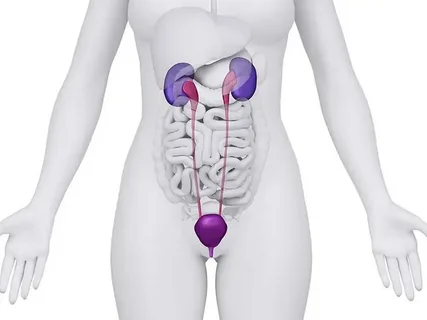Abstract
Urinary tract infections (UTIs) are among the most common bacterial infections worldwide. The growing challenge of multidrug-resistant (MDR) uropathogens has made routine treatment of UTIs more complex, leading to increased patient morbidity, longer hospitalization, and healthcare burdens. This retrospective study explores the prevalence, patterns, and contributing factors of MDR uropathogens in patients treated for UTI at UTI St. John, a tertiary care hospital. Through data analysis over a four-year period, this study aims to inform clinical decision-making and promote antimicrobial stewardship.
Introduction
Urinary tract infections (UTIs) represent a significant cause of hospital and community-based bacterial infections. While most cases are treatable with standard antibiotics, a sharp increase in multidrug-resistant (MDR) uropathogens has challenged traditional approaches. Institutions such as UTI St. John have been at the forefront of studying this trend, given their large patient base and capacity for microbiological research.
The World Health Organization (WHO) has classified antimicrobial resistance as one of the top 10 global public health threats. MDR uropathogens, particularly strains of Escherichia coli and Klebsiella pneumoniae, exhibit resistance to fluoroquinolones, cephalosporins, and even carbapenems in some regions. In a hospital setting like UTI St. John, understanding the local resistance patterns and the risk factors contributing to such resistance is essential for improving clinical outcomes and slowing the evolution of superbugs.
Objectives
- To determine the prevalence of MDR uropathogens in UTI cases at UTI St. John
- To identify the most common resistant pathogens and their susceptibility profiles
- To assess risk factors associated with MDR UTI infections
- To provide recommendations for clinical and antibiotic policy at UTI St. John
Materials and Methods
Study Design
This retrospective observational study was carried out at UTI St. John over a period of four years (January 2020 to December 2023). The study included patients with clinically and microbiologically confirmed UTIs who were admitted to or treated in the outpatient departments.
Inclusion Criteria
- Positive urine culture with a colony count ≥10⁵ CFU/mL
- Age ≥18 years
- Complete antibiotic susceptibility records
Exclusion Criteria
- Patients with asymptomatic bacteriuria
- Incomplete microbiological data
Data Collection
Clinical records, laboratory results, and microbiological profiles were extracted from the hospital’s electronic health system. MDR was defined in accordance with CDC and ECDC standards: resistance to at least one drug in three or more antimicrobial classes.
Results
A total of 1,200 patients met the inclusion criteria. Among them:
- 850 (70.8%) showed significant bacterial growth on urine culture.
- 320 isolates (37.6%) were classified as multidrug-resistant.
Demographics
- Mean age: 53.4 years
- 62% female, 38% male
- 48% of MDR UTI cases were from inpatients; 52% from outpatients
Common MDR Pathogens Identified
- Escherichia coli – 45%
- Klebsiella pneumoniae – 30%
- Proteus mirabilis – 15%
- Enterococcus faecalis – 5%
- Pseudomonas aeruginosa – 5%
Antimicrobial Resistance Patterns
- 70% of E. coli isolates were resistant to ciprofloxacin
- 60% showed resistance to third-generation cephalosporins
- 20% were extended-spectrum beta-lactamase (ESBL) producers
- Resistance to nitrofurantoin was observed in 25% of all isolates
- Carbapenem resistance, though low, was seen in 3% of Klebsiella pneumoniae
Discussion
The findings at UTI St. John reflect broader global trends while also highlighting unique regional variations in antimicrobial resistance. The high rate of E. coli resistance to fluoroquinolones and cephalosporins necessitates a shift in empirical treatment strategies. The widespread presence of ESBL-producing organisms further limits therapeutic options.
Key Risk Factors Identified:
- Prior antibiotic usage within 3 months
- Hospitalization within the past year
- Presence of urinary catheters
- Diabetes mellitus
- Age >65 years
Patients presenting with any of these risk factors at UTI St. John were significantly more likely to have MDR UTIs. Catheter-associated urinary tract infections (CAUTIs) were notably more resistant than community-acquired cases, underscoring the need for strict catheter protocols.
Clinical Implications
Localized antibiograms must now guide empirical therapy. At UTI St. John, nitrofurantoin and fosfomycin may remain viable first-line agents for uncomplicated UTIs. At the same time, carbapenems should be reserved for severe or resistant infections, given the emerging resistance even to last-line therapies.
Moreover, the data indicate a need for the implementation of rapid diagnostic tools and routine screening for resistance in high-risk populations. Antimicrobial stewardship programs (ASPs) at UTI St. John must adapt in real time based on ongoing surveillance.
Infection Control and Prevention Strategies at UTI St. John
To mitigate the spread of MDR pathogens, UTI St. John has introduced a multi-tiered infection control strategy:
- Antibiotic Time-Outs: Mandatory review of antibiotic prescriptions within 72 hours
- Catheter Reduction Campaigns: Significant reduction in unnecessary catheter use in wards
- Staff Education: Monthly training sessions for nurses and clinicians on resistance trends
- Patient Education: Discharge education materials promoting responsible antibiotic use
Limitations
Although the study provides crucial insight, certain limitations must be noted:
- Being a single-center study, the findings may not be generalizable to all settings.
- The retrospective nature restricts the ability to control for confounding variables.
- Resistance mechanisms were inferred from susceptibility patterns rather than confirmed via molecular diagnostics.
Future studies should explore molecular resistance pathways and compare resistance across urban and rural patient populations to offer a more comprehensive understanding.
Conclusion
The retrospective study at UTI St. John reveals an alarming prevalence of MDR uropathogens, especially among hospitalized patients and those with underlying risk factors. With a notable presence of ESBL-producing and fluoroquinolone-resistant strains, empirical antibiotic therapy should be reconsidered and tailored to culture-specific data.
Efforts to curb the MDR trend must include rigorous antibiotic stewardship, heightened awareness among clinicians, and improved infection control practices. Institutions like UTI St. John serve as vital hubs for tracking, analyzing, and responding to antimicrobial resistance in real-time.
FAQs
1. What makes UTI St. John a key center for MDR UTI research?
UTI St. John is a tertiary care center with advanced diagnostic capabilities, a diverse patient population, and a dedicated antimicrobial stewardship team. These factors enable it to track resistance trends and pilot interventions effectively.
2. Are there specific antibiotics still effective against MDR UTIs at UTI St. John?
Yes. Drugs such as fosfomycin, nitrofurantoin, and in some cases piperacillin-tazobactam remain effective against several resistant strains. However, susceptibility testing is crucial before initiating therapy.
3. What can patients do to prevent MDR UTIs?
Patients should avoid unnecessary antibiotic use, maintain proper hydration and hygiene, and follow catheter care guidelines. At UTI St. John, patients are also educated upon discharge about UTI prevention and resistance awareness.




